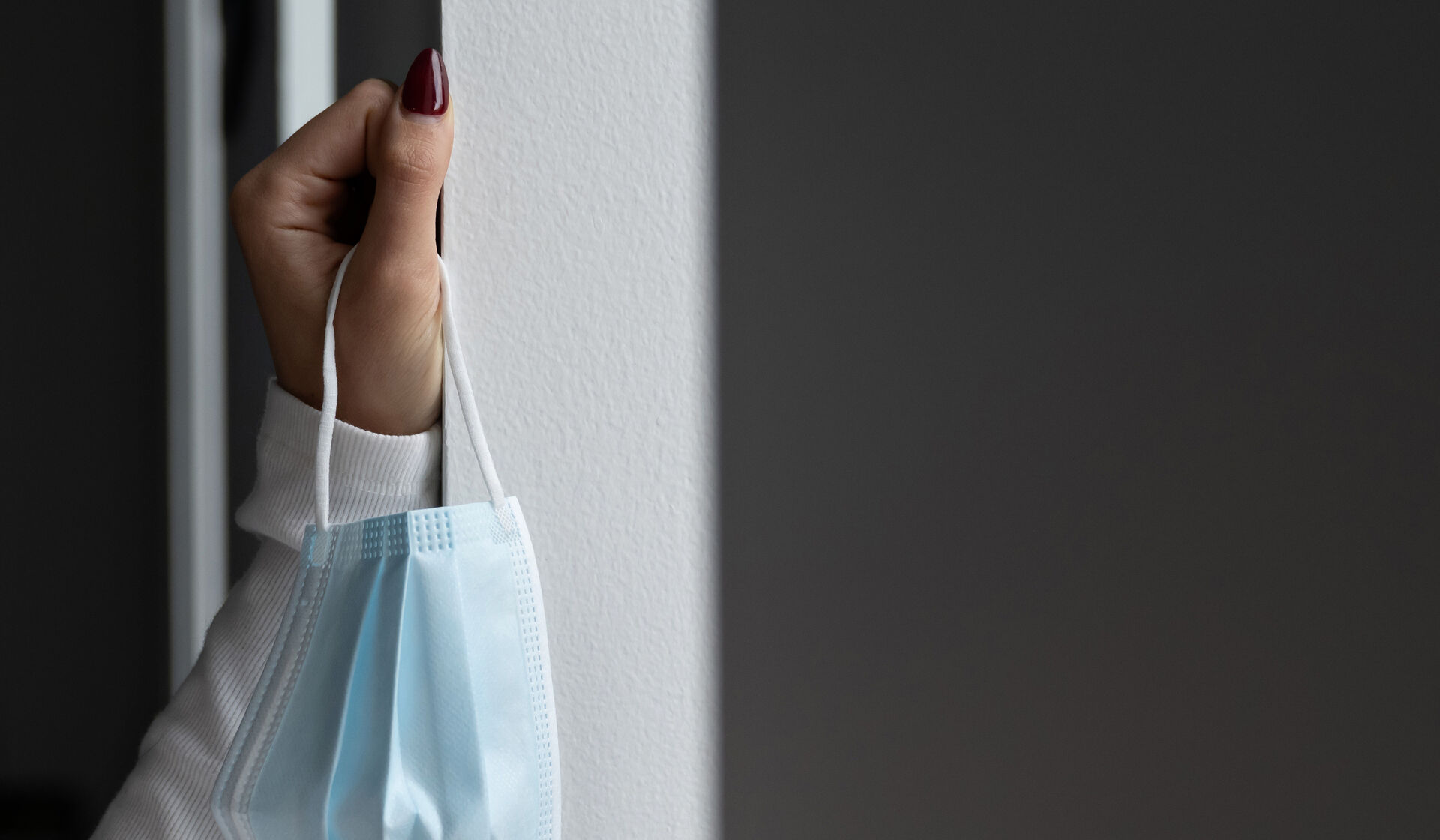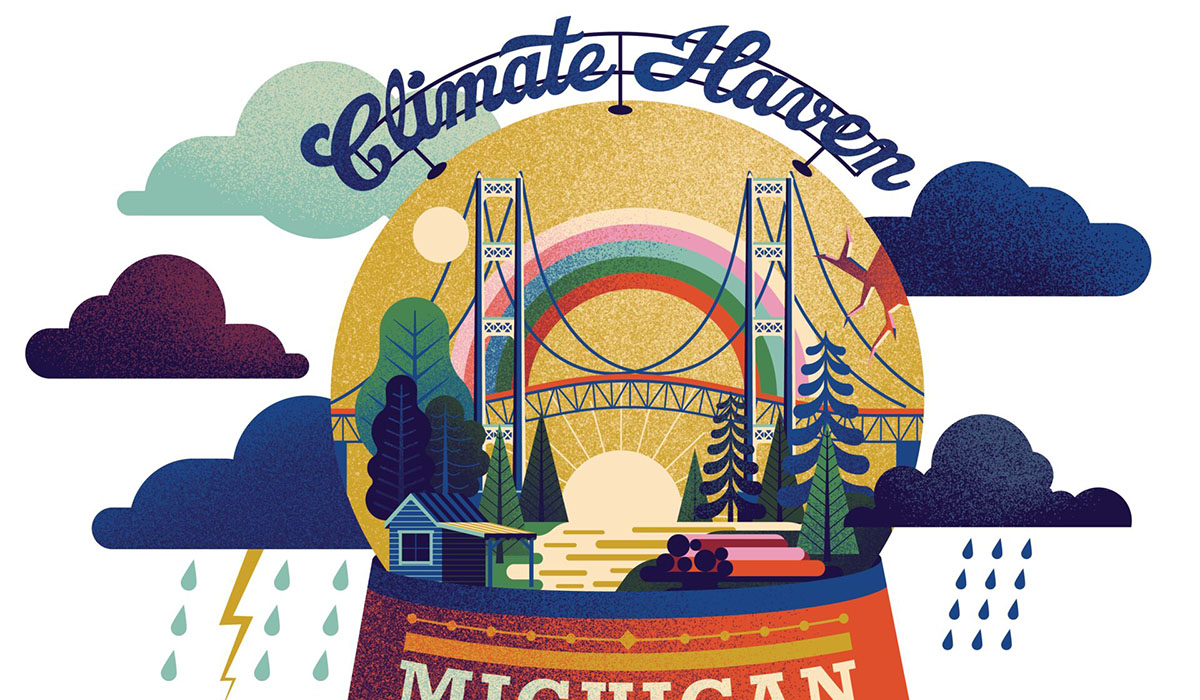The 2016 U-M college football uniform might be the first to carry Nike’s Michael Jordan Jumpman logo, but other details—from the font to the fabric—represent decades of development. So before we usher in a new era—U-M’s $173.8 million deal with Nike is a 15-year contract—let’s celebrate the past. Read here how the merging of Maize and Blue, the shaping of the Block M, and the constant blending of tradition and technology contributed to the newest iteration of the Wolverines’ classically cool uniforms.
1879
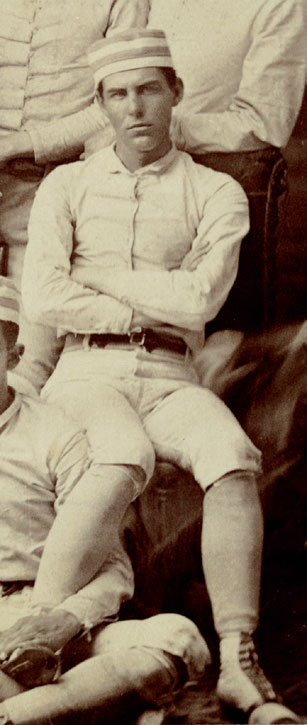
The Michigan football program debuts with the players looking more tidy than tough. As The Chronicle, a weekly U-M student newspaper put it, “On Wednesday evening, the eleven appeared on campus for the fi rst time in their new suits. They presented quite a neat appearance. The uniform is of white canvas, close fitting, with blue stockings and belt.”
1890
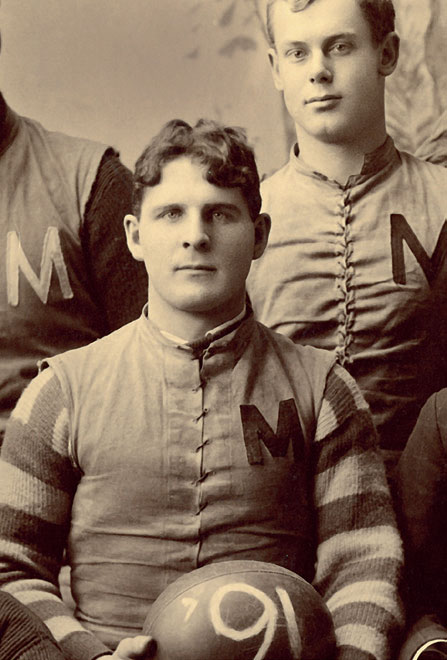
Although the new uniform includes this sleeveless vest, players are also allowed to wear older uniforms, which accounts for the different “M” versions on each jersey. By the following year, the team’s uniform features a Block M very similar to the one today.
1919
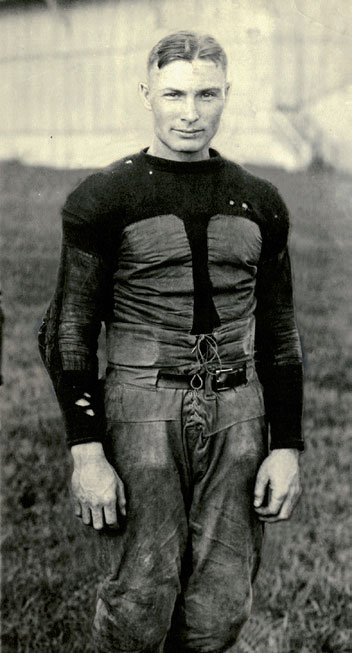
By the 1900s, football trousers are mostly made of moleskin—a strong, twilled cotton fabric—and include internal thigh and knee pads. The blue jersey with shoulder, elbow, and forearm pads first appears in photos in 1898 and will be the standard until 1911. Stitched cowhide black and brown helmets are introduced in the 1920s.
1931
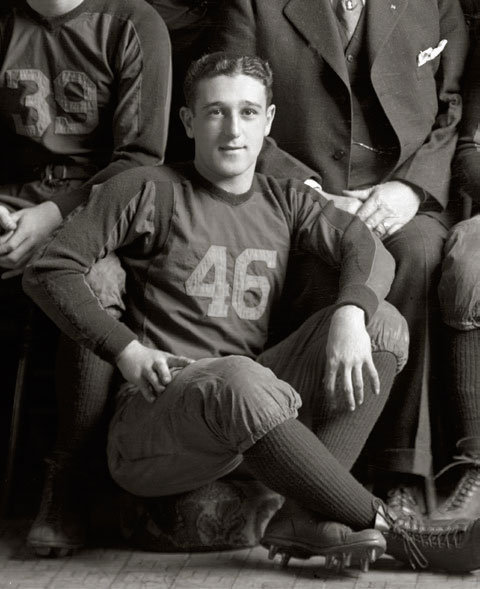
Numerals on the back of the jerseys first appear in 1915. The 1931 team is the first to wear jerseys with front numerals in games. It is not unusual for a player’s number to change between seasons or even between games.
1938

The arrival of Coach “Fritz” Crisler marks the debut of the winged helmet, now one of the most instantly recognizable icons in college sports. Crisler thinks the distinctive helmet will help his halfbacks find receivers downfield. His hunch proves right. In the season opener, the Wolverines defeat Michigan State 14-0. Michigan Alumnus comments, “Michigan has a fighting gridiron outfit once more; a team that knows how to do things and a burning desire—and considerable ability—to do what it wants.”
1947

Just before the 1948 Rose Bowl, this player and his fiancée appear on the cover of LOOK magazine. It is one of the earliest known color photos of the Michigan uniform. Note the Maize and Blue hues. In 1949, the team begins wearing white jerseys to away games, which by 1951 becomes the rule for all away games … except in Columbus, where the team wears blue through 1956.
1969
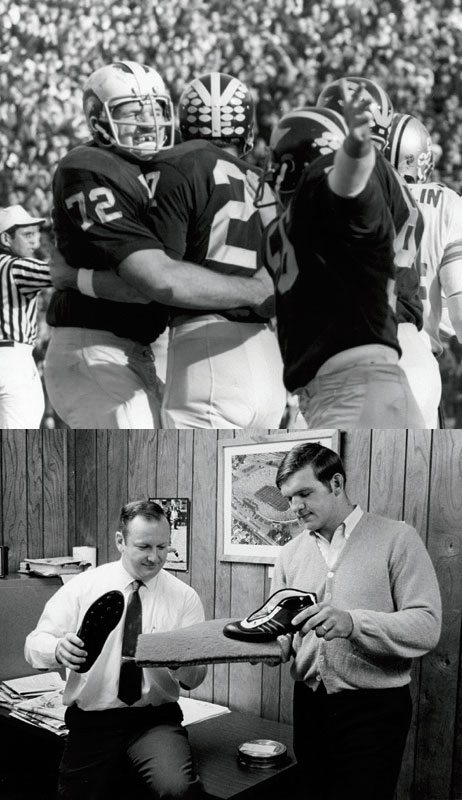
Bo Schembechler arrives and makes a few changes to the uniform. Numbers are placed on both home and away-game sleeves (which a decade earlier were also emblazoned with the Block M). Gold football stickers are affixed to helmets to recognize those who have made a “big play.” Another change is the adoption of a new shoe and cleat to better handle the artificial turf that had recently been installed in Michigan Stadium.
1974

White pants are introduced for away games in 1974 and continue through 1975. The following season, yellow pants become the standard for both home and away games. Numbers, which have been on the helmet since 1956, disappear in 1975 and the center stripe is extended to the base. The helmet achievement stickers also change from gold footballs to the head of a snarling wolverine. When former quarterback Jim Harbaugh returns to U-M in 2015 as head coach, he brings back the helmet stickers after the first game against Utah.
2008
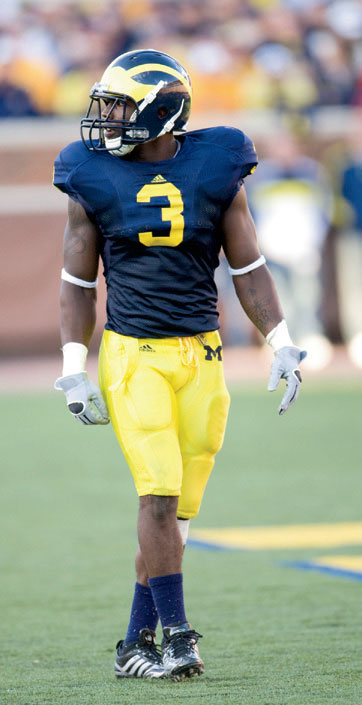
Adidas empowers players by sewing “M GO BLUE” inside their jerseys. Also hidden away, a stitched list inside the jersey shoulder of the years U-M won the Big Ten Championship.
2016

Nike, once again U-M’s apparel provider, makes several changes behind the seams. (Nike last had an apparel contract with U-M from 1994 to 2007.) The winged helmet has a matte finish, the road jersey has TV numbers on the top of the shoulder, and the maize is slightly darker. Additionally, the new uniform weighs 30 percent less, due to a new lightweight, high-performance material.
Photos courtesy of the U M Bentley Historical Library



